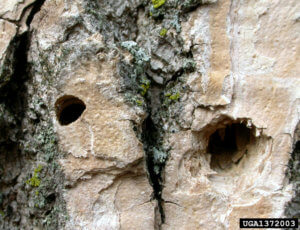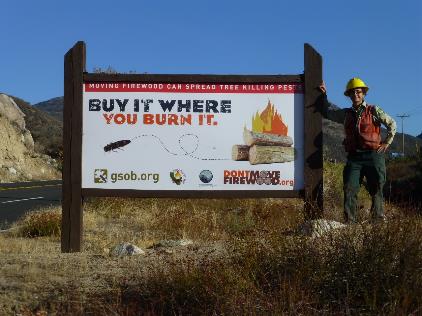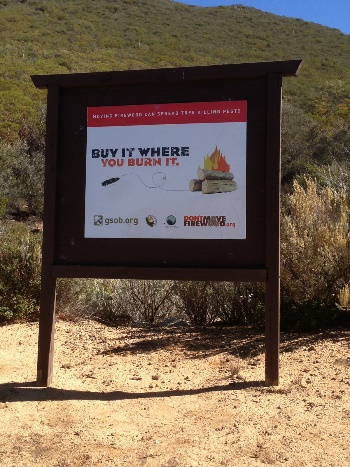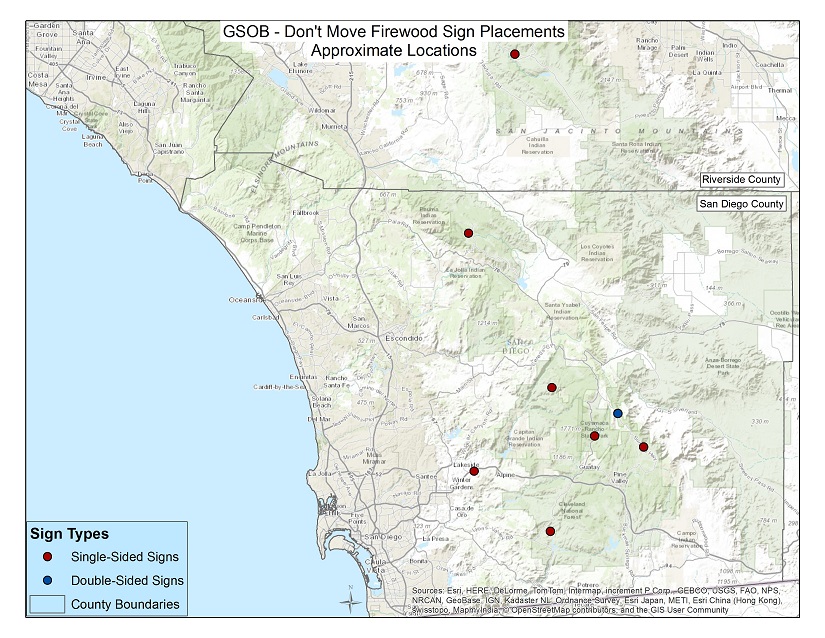When most people hear the word “Quarantine,” they think of isolating a person that’s sick with some dangerous, contagious disease. When we talk about a forest pest related quarantine, the underlying concept is the same– it is just that instead of not letting people move around, we’re often talking about not moving firewood around.
Quarantines that relate to forest pests can work two basic ways- (1) preventing potentially infested materials, like firewood, from moving out of an known infested area, or (2) preventatively designating areas where no potentially infested materials could be brought in at all. The official term for potentially contagious or infested materials (things like firewood, nursery trees, brush waste) is “regulated items,” and each forest pest has a different list of appropriate regulated items, according to how its specific life cycle works.
(1) Much like a human quarantine for a contagious illness keeps the infected person from exposing new groups of people to whatever they’ve got, the first kind of a forest pest quarantine keeps people from moving regulated items out of infested places and into uninfested locations where they could infest new groups of trees- like uninfested campgrounds, forests, or neighborhoods. In some cases, more than just firewood can spread forest pests, so a quarantine might include not just firewood, but also other regulated items like nursery trees (like emerald ash borer), or outdoor furniture (like spongy moth), or even outdoor potted plants (like imported fire ant.) One important caveat about quarantined areas is that while it might be technically legal to move materials from one side of a county or state to the other side, that action might still be spreading unwanted pests- so it is still not a good idea. Further, when it comes to forest pest quarantines, often the federal and state rules are different- and the more “strict” rules always apply first. For instance, even though both Western Massachusetts and the bottom half of New York are part of the large multistate quarantined region for emerald ash borer, due to New York State laws, it is still illegal for campers to bring untreated firewood from Western Massachusetts into New York State for their campfire.
(2) The second kind of quarantine is a more preventative measure, and it is called an External Quarantine. Instead of trying to keep current infestations in a confined area, an external quarantine is trying to preserve the health of the forests by blocking out any infested materials coming from elsewhere. For instance, Maine has an external quarantine that prohibits bringing any untreated firewood into the state of Maine, to protect their state’s very important timber resources from all possible forest pest threats.
For more information on the status of various forest pest quarantines in your area, please look up your state or province on our map.







